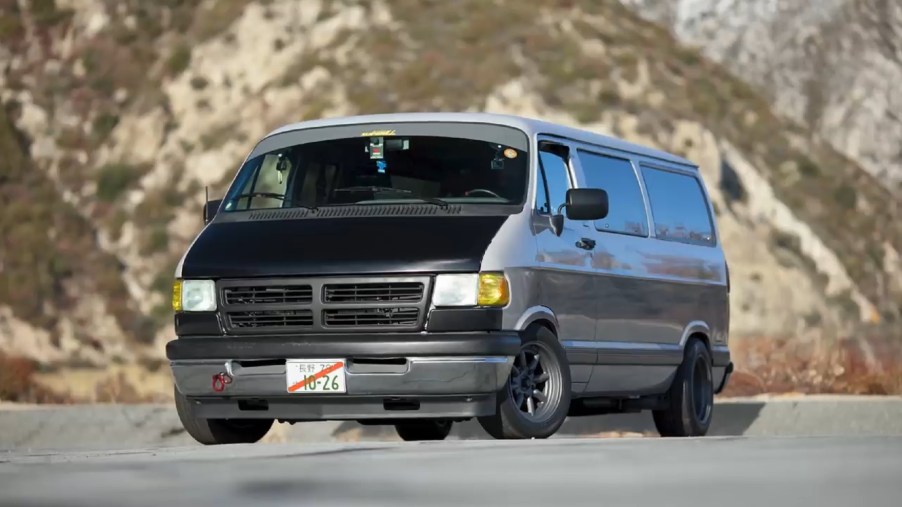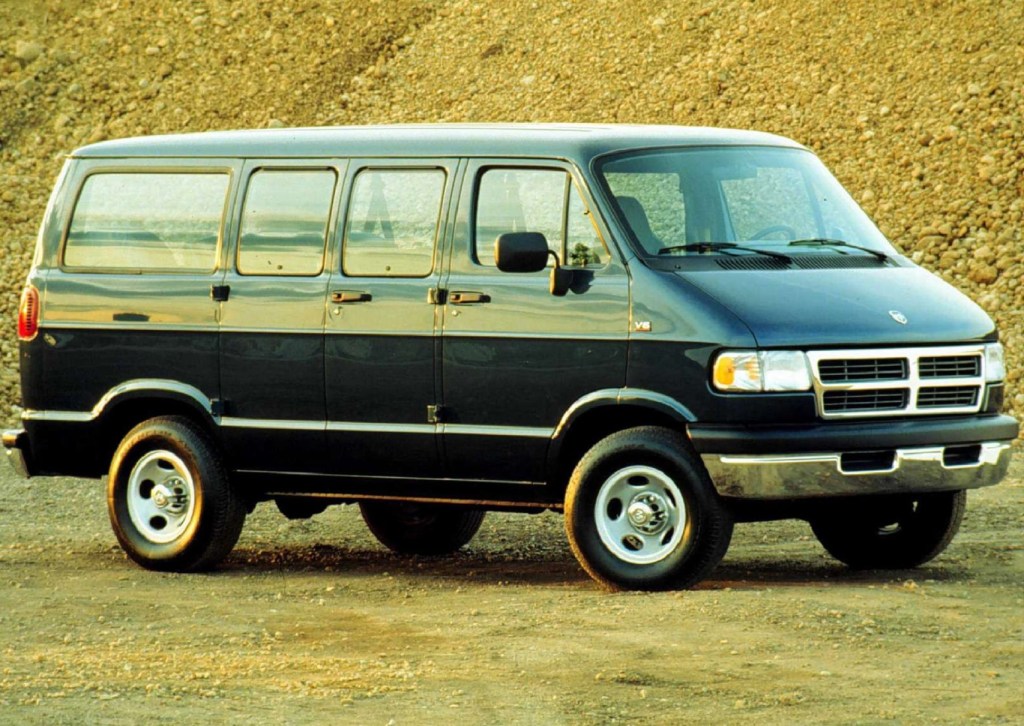
The Dajiban Is Drifting’s Latest and Craziest Trend
Camping and #vanlife are the usual activities associated with Dodge vans. Or, depending on the Ram ProMaster configuration, something in the repair field of work. But over in Japan, old-school Dodge vans have found a new purpose in life. Namely, being turned into drifting Dajibans.
How Japanese motorcycle racing led to drifting Dodge vans

Drifting is typically associated with cars like the Supra, Nissan Silvia, and the star of Initial D, the AE86 Corolla. So, how is that an entire series dedicated to slinging Dodge B-Series/Ram vans sideways came about? As it happens, motorcycle racing, Automobile explains.
Originally, Japanese motorcycle racers used these imported mid-90s Dodge Ram vans to transport their bikes and equipment to the track, Automobile explains. And many are still used at least partially for that purpose, Road & Track reports. The short-wheelbase ones were especially popular because they could still fit on Japanese streets, R&T reports. However, one day during a lunch break, a handful of racers, including Abe Takuro—more on him later—decided to take the vans out for a laugh, Autoblog reports.
The idea, though odd, isn’t totally without merit, The Drive reports. These old Dodge vans are rear-wheel drive with torquey V8s. That’s a decent recipe for a drift car. And over the years ‘Dajiban’ racing has gone from a one-off spectacle to a dedicated racing series. One with a strong Internet following, MotorTrend reports.
And as the racing has evolved, so have the Dajibans.
Building a Dajiban is insane—and drifting one is insanely fun
Dajiban racing arguably wouldn’t be where it is today without Abe Takuro. The former racer organizes the yearly van race at Japan’s Ebisu Circuit. He also currently owns a Tokyo shop that exclusively works on race-prepped vans, especially Dajibans, R&T reports. And these vans have come some way since that first impromptu race.
Turning a 1971-2003 Dodge Ram van into a Dajiban is a process at once methodical and kooky. The modifications list includes side-exit exhausts, custom lowered springs and dampers, intake modifications, and high-end Watanabe wheels, Jalopnik and Autoweek report. Extra coolers are common, as are custom exhausts and headers. Some racers even replace the stock metal bumpers with reproduction fiberglass ones, Autoblog reports.
Diffusers and wings are common, but so are fake aftermarket interior switches, purely for style. At least one racer uses a vise-grip to keep their van’s wing in place, R&T reports. Abe Takuro’s Dajiban has Ferrari—yes, that Ferrari—brake calipers, and its V8 is inside the cabin. R&T describes it as “glorious madness,” and I’m inclined to agree.
To be frank, the Dajibans aren’t fast, per se. Abe Takuro has put “’ the price of a new Ferrari’” into his van, and it’s maybe as fast as “’ a cheap rental car,’” R&T reports. But as a source of silly hilarity, it’s hard to top.
You don’t have to go to Japan to get or make one
Although the Dajiban movement started in Japan, it’s been making its way overseas over the past few years. And, as the video above shows, it’s fully possible to make your own version here in the US. Plus, getting your foot in the door is fairly cheap.
The typical base is a mid-to-late-90s Dodge Ram van with a V8, DrivingLine and Tread report. Also known as the B-Series, examples can be found on Autotrader for less than $5000. After that, all you really need is a decent set of wheels and tires, a stripped-down interior, some racing seats, and a lowered sport suspension. And for good measure, some intake and exhaust mods to free up the engine a bit.
Oh, and most importantly, a desire to have some good, crazy fun.
Follow more updates from MotorBiscuit on our Facebook page.


